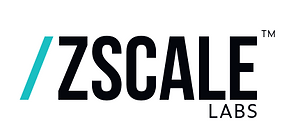
Hypervectors for Hyperdimensional Computing (HDC)
Sep 30
3 min read
1
4
0

Unlocking the Power of Hyperdimensional Computing: The Future of AI
Hyperdimensional Computing (HDC) is revolutionizing the field of artificial intelligence by introducing a novel approach to data representation and processing. At the heart of HDC lies the concept of hypervectors, which are high-dimensional vectors typically consisting of thousands of dimensions. These hypervectors serve as the fundamental building blocks for representing and manipulating information in HDC systems.
The Nature of Hypervectors
Hypervectors are not just ordinary vectors; they are specially designed to capture and encode complex information in a distributed manner. Unlike traditional data representations, where each piece of information is stored in a specific location, hypervectors spread information across their entire length. This distributed representation offers several advantages:
Robustness: Hypervectors are incredibly resilient to errors. Even if some components of the vector are corrupted or lost, the overall meaning and functionality remain largely intact.
Efficiency: Despite their high dimensionality, operations on hypervectors can be performed quickly and efficiently, often in parallel.
Expressiveness: The vast space provided by thousands of dimensions allows for rich and nuanced representations of data, concepts, and relationships.
Encoding Information in Hypervectors
The process of converting raw data into hypervectors is called encoding. HDC systems employ various encoding techniques to map different types of information into the hyperdimensional space:
Atomic Concepts: Basic elements like letters, objects, or sensor readings are assigned unique hypervectors. These serve as the foundation for more complex representations.
Relationships: HDC can express relationships between concepts using simple arithmetic operations on hypervectors. For example, binding operations can create ordered pairs or associate roles with entities.
Composite Structures: Multiple concepts or relationships can be combined into a single hypervector through superposition, allowing for the representation of complex structures or scenes.
Operations in Hyperdimensional Space
HDC leverages a set of well-defined vector operations to manipulate and reason with hypervectors:
Binding: Combines two hypervectors to create a new one, often used to associate concepts or create ordered relationships.
Superposition: Adds multiple hypervectors together, allowing for the representation of sets or the accumulation of information.
Similarity Comparison: Measures how closely related two hypervectors are, enabling classification and association tasks.
These operations form the basis of HDC's computational capabilities, allowing for tasks such as pattern recognition, associative memory, and even symbolic reasoning.
Advantages of Hypervector-based Computing
The use of hypervectors in HDC offers several compelling advantages over traditional computing paradigms:
Transparency: Unlike black-box neural networks, HDC operations can be traced and interpreted, providing insights into the system's decision-making process.
Error Tolerance: HDC systems can continue to function effectively even in the presence of noise or errors, making them suitable for applications in challenging environments.
Efficiency: Many HDC operations can be performed in parallel, potentially leading to significant speed improvements in certain tasks.
Flexibility: Hypervectors can represent a wide range of data types and concepts, from simple atomic symbols to complex structured information.
One-shot Learning: In some cases, HDC systems can learn from a single example, contrasting with the large datasets often required by deep learning approaches.
Applications and Future Prospects
Researchers and engineers are exploring the potential of hypervector-based HDC in various domains:
Image Recognition: HDC algorithms have shown promise in classifying images, including handwritten digits, with high accuracy.
Natural Language Processing: The ability to represent and manipulate symbolic information makes HDC well-suited for language-related tasks.
Sensor Fusion: HDC's efficiency in handling multimodal data could lead to advancements in areas like robotics and autonomous systems.
Brain-inspired Computing: The distributed nature of hypervector representations aligns with some theories of how the brain processes information, potentially leading to more biologically plausible AI systems.
As research in HDC continues to advance, we can expect to see more applications leveraging the power of hypervectors. The unique properties of HDC, such as its error tolerance and interpretability, make it a promising candidate for next-generation AI systems, especially in scenarios where robustness and transparency are crucial.
Hyperdimensional computing, powered by hypervectors, represents a fascinating alternative to traditional neural network approaches. As the field matures, it has the potential to reshape our understanding of artificial intelligence and open up new possibilities for creating more capable, efficient, and interpretable AI systems.
Citations:
https://www.frontiersin.org/journals/artificial-intelligence/articles/10.3389/frai.2024.1371988/full
https://michielstock.github.io/posts/2022/2022-10-04-HDVtutorial/
https://www.wired.com/story/hyperdimensional-computing-reimagines-artificial-intelligence/
#HyperdimensionalComputing #HDC #Hypervectors #ArtificialIntelligence #MachineLearning #DistributedRepresentation #ErrorTolerance #SymbolicAI #BrainInspiredComputing #VectorSymbolicArchitecture #CognitiveComputing #HighDimensionalSpace #AssociativeMemory #ParallelComputing #RobustAI #InterpretableAI #OneShot Learning #ImageRecognition #NaturalLanguageProcessing #FutureOfAI






